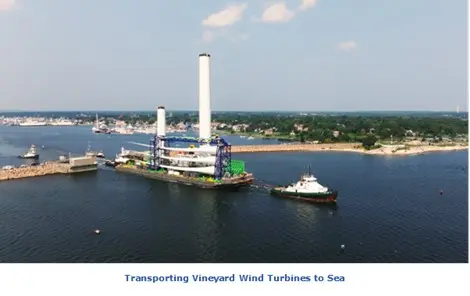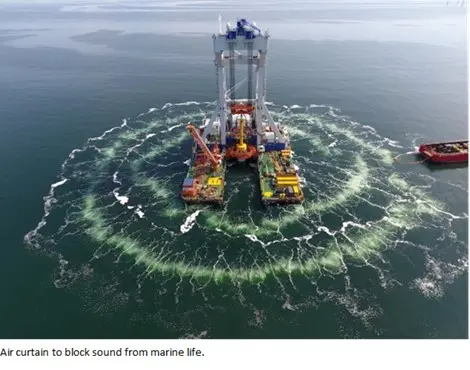

The United States offshore wind industry has the potential to revolutionize clean power production. The Vineyard Wind project will start generating power later this year and maybe before the end of October.

In 2016, the United States Department of Energy estimated that the country has a gross resource potential of 10,800GW of offshore wind capacity, with a "technical" resource potential of 2,058GW. In 2021 the Biden administration announced a target of 30 GW of offshore wind by 2030 and as of August 4, 2023, there are over 100 offshore wind projects planned in the United States, with a total capacity of over 140 gigawatts (GW). This capacity is enough to power over 40 million homes.
ARC has been following the progress of the energy transition and the offshore wind industry and attended the ACP (American Clean Power) conference in Boston on October 2-4, 2023. Last year we reported the industry was gaining momentum. https://www.arcweb.com/blog/acp-offshore-wind-conference-shows-us-gaining-momentum. This year there is steel in the ground and the first power from the Vineyard Wind project is imminent. While this impressive progress shows the power of human ingenuity, there are significant obstacles that have already delayed progress and threaten to slow progress in the future.

Four lawsuits have been filed against the Vineyard wind project alleging the BOEM (Bureau of Ocean Energy Management) did not perform an adequate environmental impact analysis. The BOEM claimed that it had conducted a thorough, cumulative impact analysis before approving the project. This included the removal of six initial turbine locations to accommodate fishing traffic and the establishment of agreements restricting vessel speeds, limiting construction noise, and stopping construction during migration season to protect the right whale. Vineyard Wind developers also added that they installed bubble chains to absorb sound during foundation installation, laid down subsea cable corridors to avoid sensitive habitats and eelgrass beds, and aimed to minimize sediment dispersion and dredging with the use of jetplows.
There are a range of supply chain issues facing the offshore wind industry. It is hard to create a whole new energy industry. While European experts have helped, the US wants to maximize domestic content, which requires expensive new US manufacturing capability and takes time to build. The Jones Act requires that goods shipped between US ports be transported on ships that are built, owned, and operated by US citizens or permanent residents. This means the US must build their own specialized ships to install the wind turbines and, in the meantime, we need expensive shuttles to carry out blades and towers to the vessel, such as the ship Sea Installer owned by contractor DEME (Belgium), which is not allowed into US ports. There are a limited number of companies that manufacture offshore wind turbines and other components. This can lead to long lead times and higher prices for offshore wind projects.
The offshore wind industry is growing rapidly around the world. This is increasing demand for offshore wind turbines and other components and putting pressure on the supply chain.
Offshore wind turbines and other components are large and heavy. This makes them difficult and expensive to transport.
Port infrastructure needs to be built to handle the large and heavy components of offshore wind turbines.
There is a shortage of skilled workers in the wind industry and this is more acute for offshore wind companies which will need hundreds of thousands of new workers in the United States in the coming years.
The offshore wind industry and the BOEM have made an open and comprehensive analysis of the environmental issues with help from a wide range of ocean consultants and scientists. Developers have often partnered with stakeholders like the fishing industry and learned from the offshore oil and gas industry. This environmental analysis is very helpful to defend against frivolous lawsuits and is the basis for fighting back attacks from disinformation campaigns. Since 2019, Vineyard Wind has spent approximately $5 million hiring more than 30 local fishing vessels at different stages of the project, including fisheries research campaigns, and scout vessels to support geophysical survey vessels and more recently as safety vessel support for offshore cable installation.
As the industry moves from its infancy, there is every reason to expect the emergence of new manufacturing and marine resources that will reduce costs and speed installations to allow the US to capitalize on this low carbon power and protect the precious natural ocean resources. A 2022 study by the University of Massachusetts Dartmouth found that opposition to offshore wind decreased significantly over time on Block Island, Rhode Island, where the United States' first commercial offshore wind farm was built. As people learned more about offshore wind, they became more supportive of the offshore wind technology.

